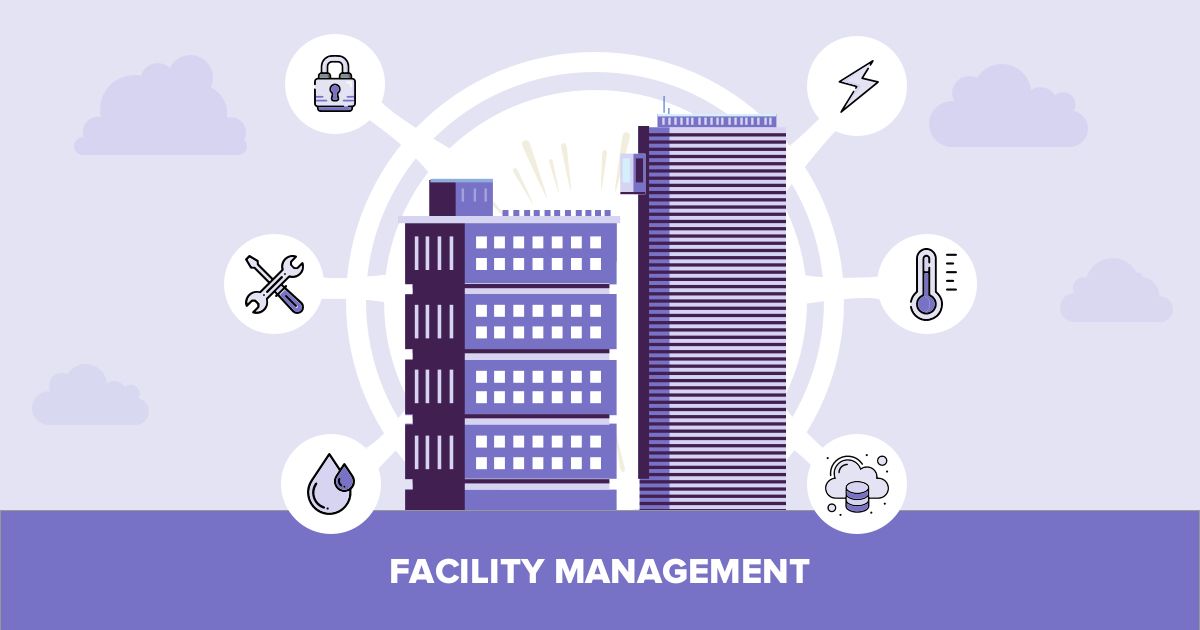The Essential Guide to Facility Management: Approaches for Success
Center administration plays an essential role in the general success of a company, functioning as the foundation that supports safety, efficiency, and productivity. By employing calculated techniques such as integrated technical remedies and promoting cross-departmental collaboration, organizations can considerably enhance their functional structures. The subtleties of effective center administration prolong beyond plain logistics and require an extensive understanding of both qualitative and quantitative metrics. As we check out these crucial methods, a closer assessment discloses how they can change not simply centers, but the actual culture within an organization itself. What might these changes resemble in practice?
Understanding Facility Management
What constitutes efficient facility administration? Reliable center management incorporates the sychronisation of various organizational features to guarantee that constructed environments are secure, effective, and for performance. Facility Management. It integrates the principles of architecture, company, and design administration to create a smooth operational circulation within a company
Crucial element of center administration consist of area preparation, maintenance management, and conformity with health and wellness laws. Area preparation focuses on maximizing using physical sources to sustain business objectives, while upkeep management makes certain that facilities are kept in ideal condition, making best use of life expectancy and lowering operational prices. Conformity with governing and lawful standards is important, as it safeguards the organization against possible responsibilities and boosts its track record.
Moreover, effective facility management counts on the strategic usage of innovation, such as Building Management Solution (BMS) and Computer-Aided Facility Monitoring (CAFM) devices. These modern technologies help with real-time tracking of building systems and enhance maintenance processes. Ultimately, a comprehensive technique to facility management not just advertises operational efficiency yet additionally fosters a favorable setting for workers and site visitors alike, driving overall business success.
Trick Strategies for Optimization
Optimizing center administration calls for a calculated method that straightens functional exercise with business goals. To attain this, the very first key method is the execution of incorporated technical options. Using sophisticated software application systems enables real-time surveillance of facility operations, promoting data-driven decision-making and enhancing total effectiveness.
Second of all, normal assessments of center efficiency are vital. Performing regular assessments and audits enables facility managers to recognize locations that require improvement, making sure that sources are assigned properly. This positive approach helps in lessening downtime and boosting solution shipment.
One more critical technique is promoting cooperation across departments. By urging open interaction between groups, center managers can better straighten their techniques with company goals, leading to improved functional synergy. Furthermore, engaging team in training programs advertises a society of responsibility and boosts their capability to contribute to optimization initiatives.
Enhancing Safety Procedures
Enhancing safety and security procedures is necessary for producing a safe and secure setting within centers. An extensive safety and security protocol not just safeguards visitors and workers yet likewise enhances functional effectiveness. To achieve this, center managers have to conduct normal risk evaluations to make sure and recognize potential hazards that appropriate measures are in area.
Educating and education and learning are essential parts of efficient safety and security protocols - Facility Management. Staff members ought to get recurring training in emergency situation procedures, equipment handling, and personal protective actions. Normal drills, such as fire emptyings or lockdown procedures, foster familiarity and readiness among staff
Additionally, clear communication channels need to be developed to report security concerns without delay. This consists of developing an accessible platform for workers to articulate potential risks or events without anxiety of retribution. Leveraging technology can boost security measures; for example, implementing monitoring systems and gain access to controls assists keep track of center tasks and limit unapproved entrance.
Lastly, conformity with regional policies and sector standards is non-negotiable. Routine audits and reviews of security procedures guarantee alignment with existing laws and ideal techniques. By prioritizing these approaches, center supervisors can cultivate a culture of safety that protects all stakeholders and inevitably adds to the organization's success.
Improving Work Environment Setting

Ergonomic considerations are vital to lessen physical stress and pain. Facility Management. This entails offering adjustable furnishings, correct illumination, and ample space for activity. These changes can lead to decreased absence and enhanced task contentment
Aesthetics play an important duty fit the office atmosphere. Utilizing color psychology, natural lights, and greenery can promote a inviting and stimulating atmosphere. Thoughtfully designed spaces can improve imagination and enhance overall wellness.
Additionally, encouraging worker engagement through inclusive decision-making processes can enhance the sense of possession and belonging. Gathering responses on workplace enhancements and entailing workers in the design procedure can result in a much more customized setting that satisfies their demands.
Last but not least, promoting health campaigns, such as health cares and relaxation spaces, can even more add to a helpful work environment culture. By concentrating on these methods, center managers can efficiently enhance the office setting, driving both worker complete satisfaction and business success.
Measuring Success in Facilities
Determining success in center administration requires a thorough method that reviews both qualitative and quantitative metrics. Quantitative metrics usually consist of vital efficiency indications (KPIs) such as space utilization rates, energy intake, maintenance costs, and occupancy levels. These metrics supply a clear image of functional performance and economic efficiency, allowing facility managers to identify locations for renovation and standard against industry standards.
Qualitative metrics, on the other hand, concentrate on user complete satisfaction and employee engagement. Studies and responses systems can evaluate just how well the facilities fulfill the needs of owners, aiding to examine the general workplace atmosphere. This aspect is crucial, as a completely satisfied workforce is commonly my blog linked to increased efficiency and retention rates.
To efficiently measure success, facility managers ought to also take into consideration integrating modern technology, such as building management systems and data analytics tools, to gather and analyze pertinent data. Consistently assessing both sets of metrics enables for a more well balanced view of performance and informs strategic choices. Eventually, an effective facility monitoring technique rests on a commitment to constant renovation, guaranteeing that both operational effectiveness and user satisfaction are prioritized.
Final Thought

Facility monitoring plays a critical role in the general success of an organization, offering as the foundation that sustains safety and security, performance, and efficiency.Key aspects of center management consist of space planning, upkeep management, and compliance with wellness and security guidelines.Moreover, efficient center monitoring counts on the critical usage of modern technology, such as Structure Administration Equipment (BMS) and Computer-Aided Facility Monitoring (CAFM) tools. Eventually, a detailed technique to center administration not just promotes operational efficiency however also fosters a positive atmosphere for workers and visitors alike, driving general organizational success.
Ultimately, an effective facility administration technique hinges on a dedication to continuous improvement, making certain that both operational efficiencies and individual fulfillment are prioritized.